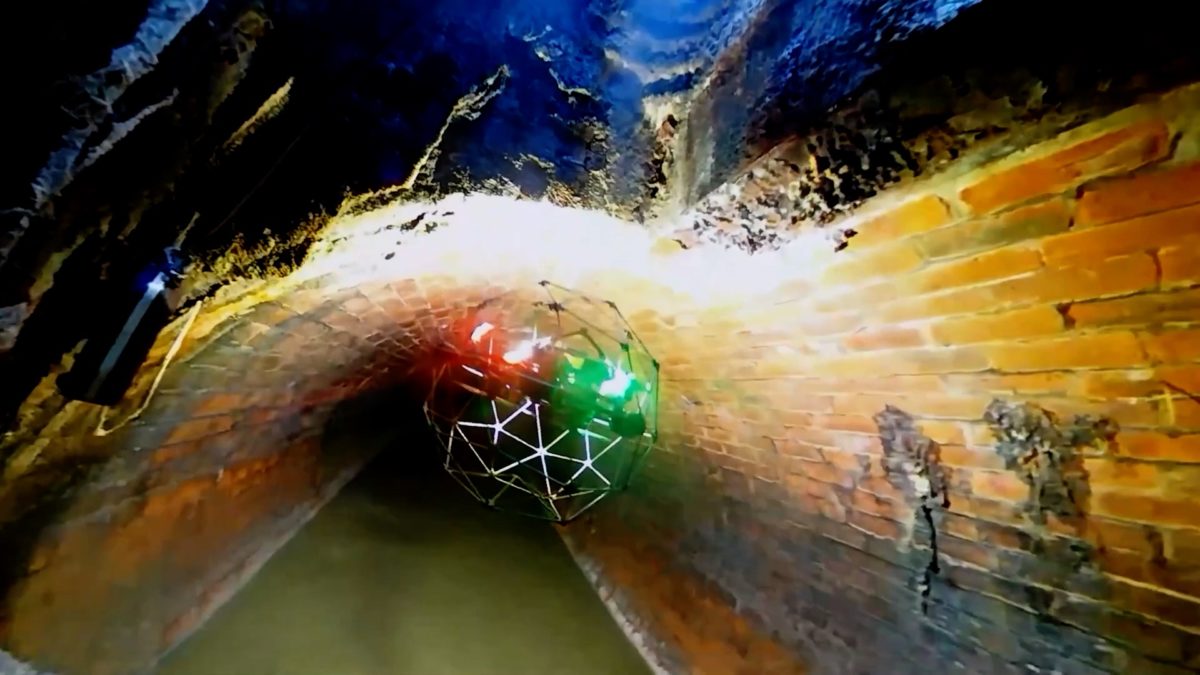
SCOTTISH Water has announced that drones and lasers are being used together for the first time in Britain to improve Scotland’s sewers and help the organisation reduce its carbon emissions.
A combination of drones and laser tech adapted for use in the waste water Industry is being deployed to survey sewers for potential problems by flying the drones inside them, often to parts of the network that traditional surveying methods can’t reach.
Scottish Water revealed that using the new techniques will enable it to more accurately assess the sewers’ condition and make decisions about investment in maintenance or rehabilitation work.
Replacing teams of up to 15 workers with just two operatives using drone and Light Detection and Ranging (LiDAR) scanning and measurement techniques is also tipped to reduce carbon emissions from sewer surveys by as much as 80%.
Many of the sewers, some dating back to the Victorian era, have previously been difficult to access but much more of the network is now reachable following the collaboration between Scottish Water, alliance partner Caledonia Water Alliance (CWA), civil engineering trenchless specialist Environmental Techniques, and drone manufacturer Good Friday Robotics.
The adapted technology was used together for the first time on a brick sewer in Bath Street in Glasgow this summer and is set to be rolled out and used at other locations in Glasgow, Edinburgh, Aberdeen, and some rural areas.
LiDAR is a laser scanning tool that measures distances and the associated software creates a computerised 3D point field output which can be viewed on-screen. The drone carries the LiDAR and camera onboard as it flies inside the pipe.
A worker controls or pilots the drone as it flies along the pipe and uses video for visual inspection and LiDAR for measurement. The outputs are then reviewed by operators to spot and code the defects.
Scottish Water added that the drones were adapted specifically for sewers and are made of carbon fibre to reduce their weight and extend battery life.
Iain Jones, risk and life cycle planning manager at Scottish Water, said, “This is the first time we’ve used drones adapted for sewers and LiDAR together for sewer surveys and we are really excited about it. We want to improve the accuracy of our surveys and, for safety reasons, we want to reduce the number of workers needed to carry out survey work inside sewers.
“The drone does both and they will also help us in our aim to reach net zero carbon emissions by 2040. Factors such as depth, flows and debris can significantly slow down a worker entry survey in a way that does not affect the drones. Because of the reduction in the number of workers involved, a large number of site vans and vehicle deliveries are not required and so carbon emissions are reduced.”
Shauna Herron, director of environmental techniques, added, “We’re delighted to be working with Scottish Water, CWA and Good Friday Robotics on the adaptation of these cutting edge technologies to help maintain and improve the network of sewers under the streets of our cities and towns. The fact that it will also improve workers’ safety and reduce carbon emissions is really important.”







